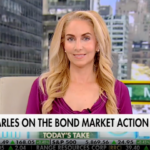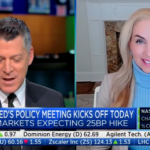
WSJ Features IVOL: Investors May Be Too Confident Rate Hikes Will Work
The Wall Street Journal recently featured IVOL in a major article on what is next for markets. Six prominent investors were invited to share their views. In addition to IVOL PM Nancy Davis, the Journal also interviewed ex-Goldman Sachs Chief Lloyd Blankfein, investing legend Jeremy Grantham and others. Nancy argues that inflation may be stickier than what the market is pricing in, and that bond investors should be prepared.
Inflation is currently running above 8%, far above the Federal Reserves’ 2% target1. Meanwhile, the five-year breakeven inflation rate, a widely followed measure of investors' annual inflation expectations, currently stands at 2.6%1. With inflation expectations well below current rates, investors are largely anticipating the Fed will be able to tame inflation over the next five years. Nancy Davis believes, “investors may be too confident the Fed’s rate hikes will eventually bring inflation down.”
This persistent high inflation, paired with lower growth from rising rates and increased unemployment, could lead to an economic situation known as Stagflation, which can be painful for investors. Higher prices coupled with lower growth is a potentially terrible environment to generate positive real returns. With inflation as measured by CPI still a multiple of the Fed’s preferred long-term average and the US economy contracting, Stagflation is a very real possibility. Geopolitical instability resulting in reductions of international trade could also be catalysts for Stagflation.
In a recent white paper, Nancy Davis laid out her argument in more detail and makes the case for how IVOL could benefit from Stagflation. We have summarized the section of the white paper below.
IVOL could benefit in Stagflation.
Some investors might hope that a large bond portfolio would provide some protection in a stagflationary environment, but Stagflation could be difficult for holders of fixed-income instruments. Bonds could be just as likely to sell off as equities, foiling the popular “risk parity” strategy.
Additionally, the bond market is susceptible to supply and demand dynamics that could lead to a decoupling of normal correlations. A classic example occurred during the immediate aftermath of the financial crisis from January to March 2009. During these months, the equity market deteriorated along with the economic data. Investors who looked for a haven in Treasuries were not successful. 2 year US Treasuries sold off by 19 basis points (bps) and 10y Treasuries sold off by 41bps due to higher supply as the Treasury sought to finance increasing deficits.
More recently, stocks and bonds have sold off together. During the first half of 2022, while US equity indexes were down by double digits, the bond markets offered no haven. Shorter- and longer-dated Treasuries, municipal bonds, mortgages, investment grade, high-yield bonds, and even gold have all sold off right along with stocks.
As correlations increase and investors look for other choices, the type of options portfolio held by IVOL may be of interest. In an environment of increasing volatility, rising prices, and higher inflation expectations, IVOL’s Treasury Inflation-Protected Securities (TIPS) and options would be expected to do very well because the interest rate curve is likely to steepen, and volatility increase in such an environment. The positive effect could be even further enhanced by any negative rate cuts the Fed may undertake to stimulate the economy. If, on the other hand, prices fall and the economy experiences disinflation, IVOL may underperform. This is because lower levels of expected inflation, other factors being held equal, might cause the value of the options owned by IVOL to fall. Lower levels of expected future inflation might also cause the TIPS portion of the portfolio to fall.
While no one hopes for a Stagflation scenario in the US, it is a real possibility within the current trajectory of interest rate hikes. If Stagflation does materialize, IVOL’s options portfolio may help mitigate investor losses elsewhere in their portfolio.
1.) Gunjan Banerji, Sam Goldfarb, Justin Baer, and Akane Otani, "Where Are Markets Headed? Six Pros Take Their Best Guess." The Wall Street Journal. 10/29/2022













